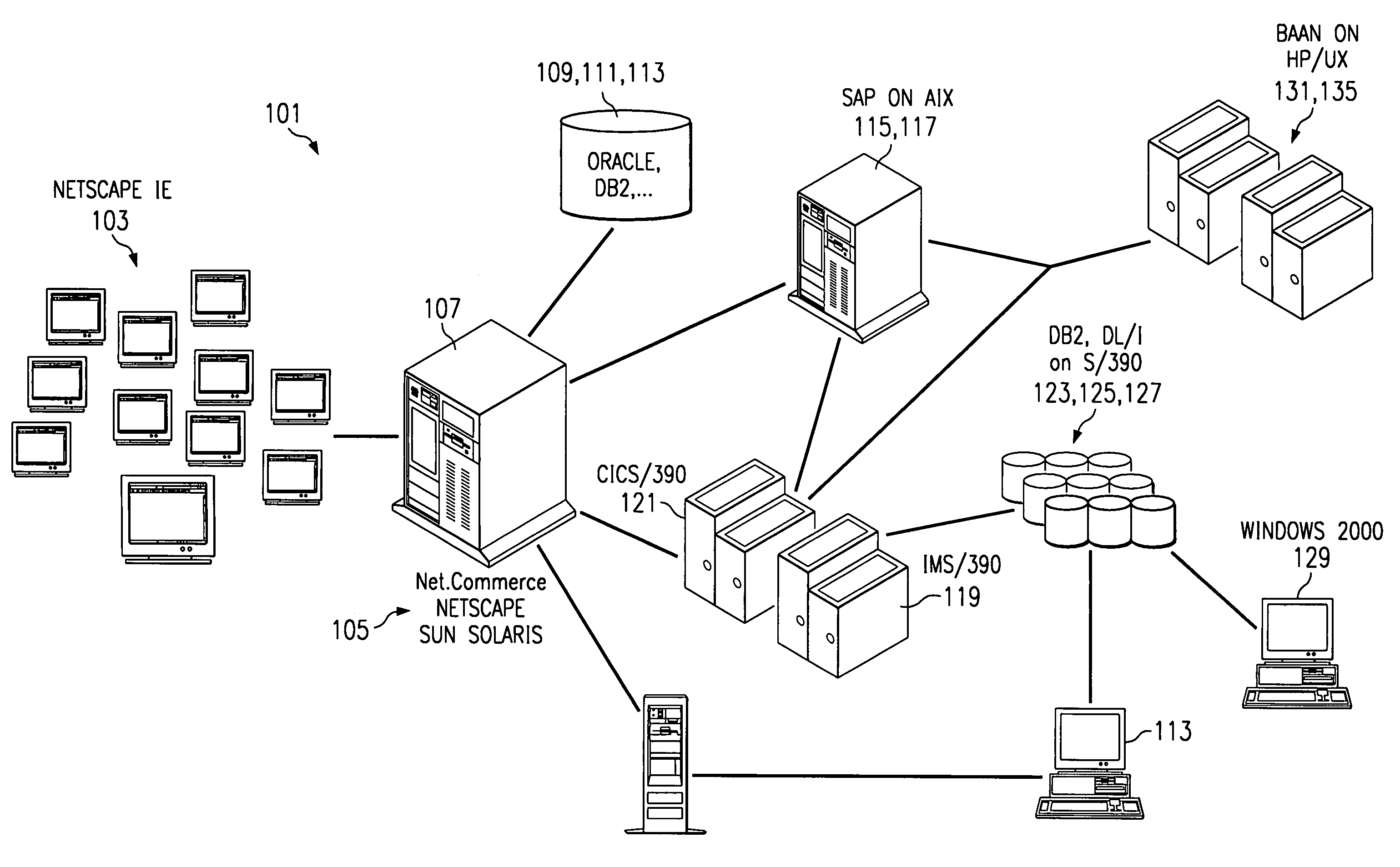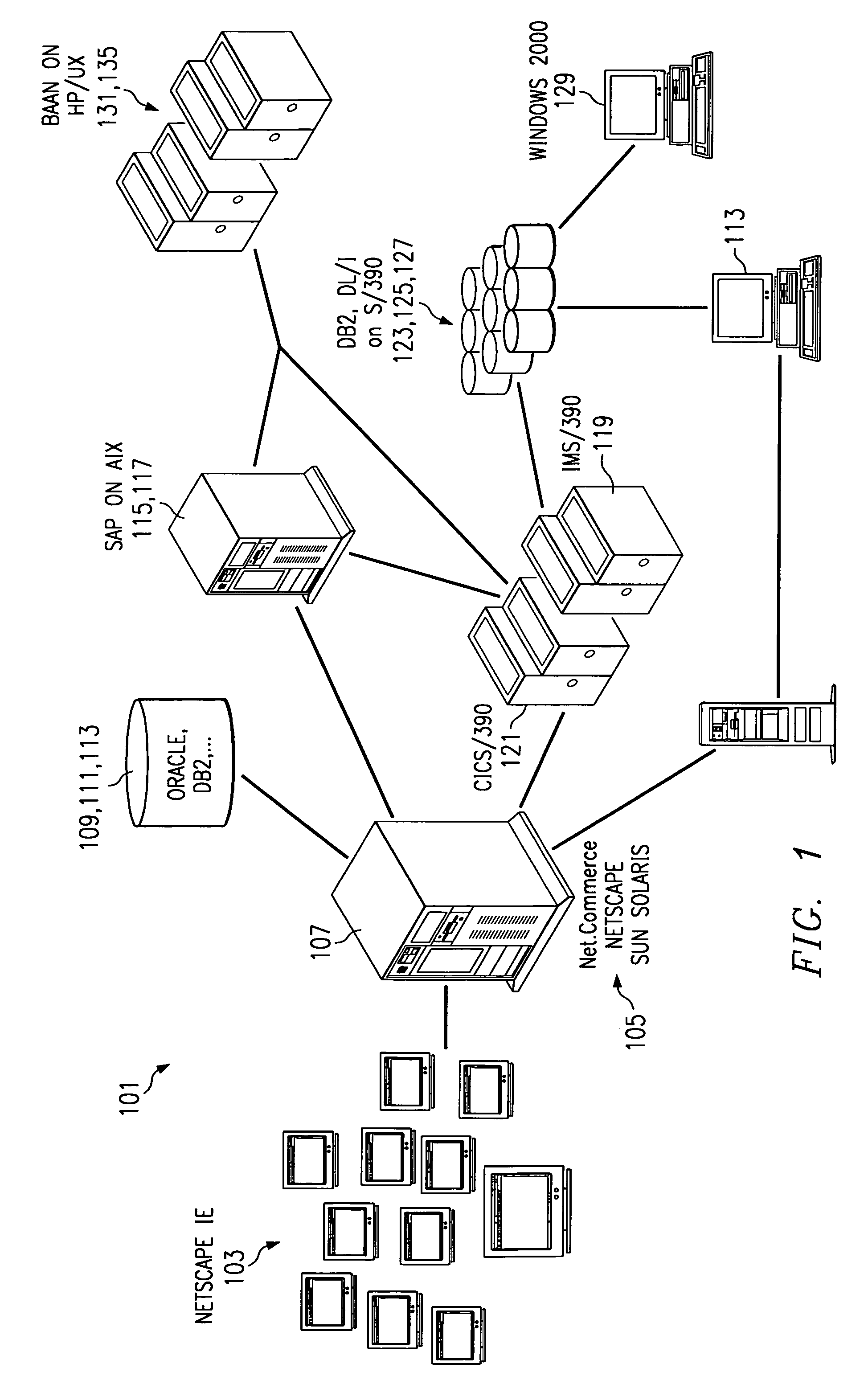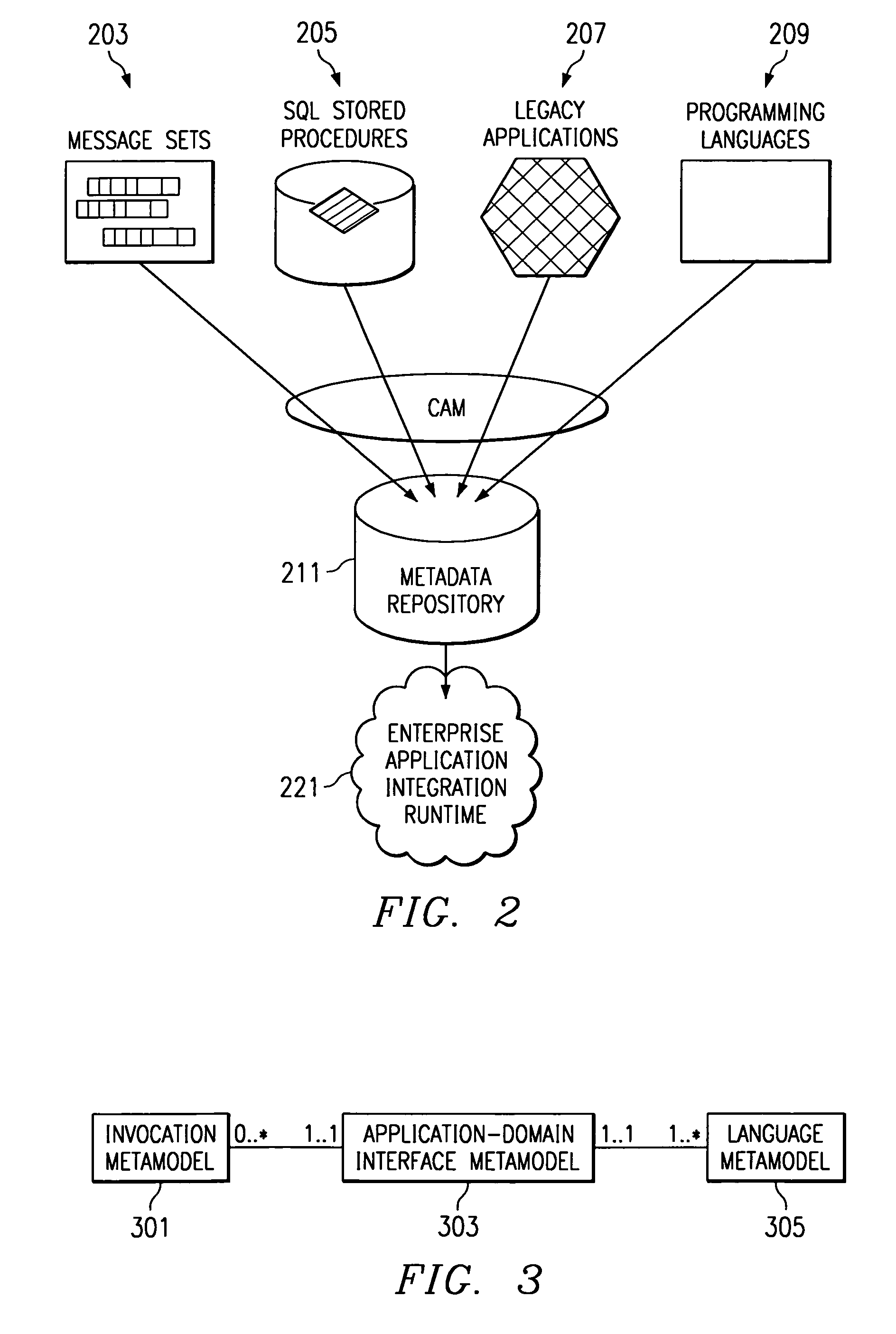CICS BMS (basic message service) meta model
a basic message service and meta model technology, applied in the field of cics bms (basic message service) meta model, can solve the problems of difficult and expensive task of integrating legacy applications with new software, no complete and easy mechanism to integrate or e-business enable applications, and developers with a rat's nest of hard-to-maintain connections between applications. achieve the effect of facilitating connectivity
- Summary
- Abstract
- Description
- Claims
- Application Information
AI Technical Summary
Benefits of technology
Problems solved by technology
Method used
Image
Examples
Embodiment Construction
[0056]Definitions. As used herein the following terms have the indicated meanings.[0057]“Handshaking” is the exchange of information between two applications and the resulting agreement about which languages, capabilities, and protocols to use that precedes each connection.[0058]An “application program interface” (API) is a passive specific method prescribed by a computer operating system or by another application program by which a programmer writing an application program can make requests of the operating system or another application. Exemplary is SAX (Simple API for XML), an connector that allows a programmer to interpret a Web file that uses the Extensible Markup Language, that is, a Web file that describes a collection of data. SAX is an event-driven interface. The programmer specifies an event that may happen and, if it does, SAX gets control and handles the situation. SAX works directly with an XML parser.[0059]A “connector” as used herein is a dynamic, run-time, interface ...
PUM
 Login to View More
Login to View More Abstract
Description
Claims
Application Information
 Login to View More
Login to View More - R&D
- Intellectual Property
- Life Sciences
- Materials
- Tech Scout
- Unparalleled Data Quality
- Higher Quality Content
- 60% Fewer Hallucinations
Browse by: Latest US Patents, China's latest patents, Technical Efficacy Thesaurus, Application Domain, Technology Topic, Popular Technical Reports.
© 2025 PatSnap. All rights reserved.Legal|Privacy policy|Modern Slavery Act Transparency Statement|Sitemap|About US| Contact US: help@patsnap.com



